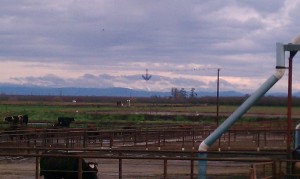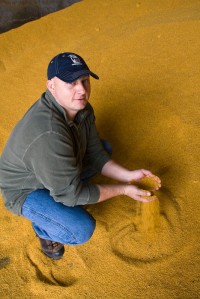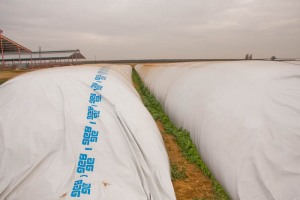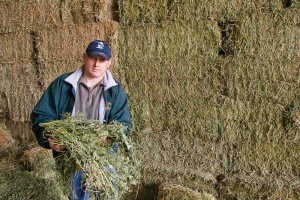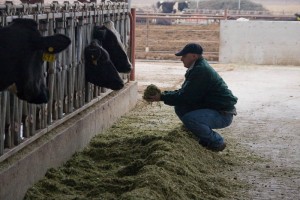Ray-Lin Dairy
cow picture
Is my milk safe?
Cleanliness and safety is something that we think about before we even think about milking the cows. Cleanliness starts with the cow beds andalso by keeping our cows healthy . We wash our milk pipelines three times a day once between every milking shift, the milk tank is washed once a day after it has been emptied and the milk pumped out and onto the tanker truck. Food safety is something paid close attention to on a dairy farm here are few pictures showing what we do to produce healthy refreshing milk!

This tank cools the milk and stores it at a chilly 39 degrees. This is a brand new 5000 gallon milk tank we installed a few months ago.

Inside these stainless steel tubes the milk is filtered before ending up in the milk tank. Fresh new filters are installed before each milking shift.
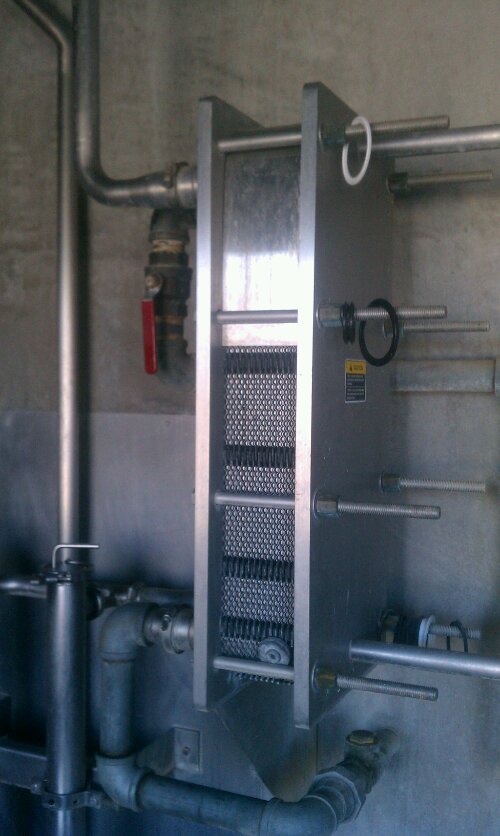
This is a plate cooler that uses water to help cool the milk by nearly 20 degrees before the milk enters the milk tank.

This chart tracks the temperature of the milk and is changed every 48 hours. If you notice the two spikes in temperature they are when the tank is washed daily after the milk is pumped into the milk truck to be taken to the milk plant.

This sink is where the cleaning agents are m ixed with water to wash the pipelines the milk flows through. It is like a big dishwasher for pipes and is used after each milking shift.

the cows teats are dipped with an 1% iodine and lanolin solution to keep them soft and clean.

Although hard to see because it is a clear gold color this is a peroxide based teat sanitizer we use before the cow is milked. It also has lanolin in it to keep the teats soft..

The cleaning agents are automatically added to the wash sink for employee safety.

We even take safety as far as protecting our water supply from being contaminated with cleaning agents or milk.

The milking machines are washed in between every milking shift
Cow Bling!

New calves showing off their bling!
On our farm we use eartags to give each animal an unique identifier that allows us to keep important health records for each animal. Here are a few pictures that show the tags up close.

This is used to apply the tags similar to how ears are pierced for earrings
The tags are applied in a similar fashion to earrings through a soft portion of the ear. Each tag is self contained and is clean and sterile.

Each tag has 2 parts this is the male part

Cow bling has a lot of information about the animal
The information of the tags includes our farm brand (starting at the very top of the biggest tag), next is the unique “840” number assigned to only this animal in the United States, followed by the unique number for our farm, in this case 2129. The small white tag has the same numbers and also id an EID tag that contains an RFID information. We currently do not utilize the RFID tag outside of visual use however are we will be implementing the electronic reading in the future to help with efficiency and to eliminate human error.
Lazy Summer Morning
Here is a cow picture for Wordless Wednesday.

A few of our cows enjoying the cool morning before a hot summer day here in Central California.
These cows were just moved into this pasture yesterday and are relaxing in the grass. With all the late rains we had here in the Central Valley and now the heat the grass is growing very quickly in the pasture. these cows need to get up and get to work eating it down!
Posted from WordPress for Android
Related articles
- Cows play in sprinklers? Wordless Wednesday (raylindairy.wordpress.com)
Cows play in sprinklers? Wordless Wednesday
This started out as a Wordless Wednesday however I decided to add some background information.
Today I’m doing maintenance work on one of the major pieces in our cow comfort system the soakers that help keep the cows cool during the summer.
Here is a picture of the cows enjoying the cool shower just like kids playing in the sprinkler do during the summer.

Cows being cooled by the soaker system.
The soakers come turn on to soak the cows and then are off for a period of time to allow the water to evaporate and creating evaporative cooling. This type of cooling is the same cooling feeling you get right after getting out of a swimming pool on a hot day. We locate the soakers over the cows food so they are more comfortable while eating and their food intake stay’s up during hot days when they need the energy.

This little box is a great help to keep cows comfortable
This controller uses the temperature at the cow level to adjust the on and off times so the optimum cooling of the cows is maintained.
Posted from WordPress for Android
Making the Cow Beds
Here is a look into what goes into providing the cows on our farm clean soft comfortable beds to lie in. The pictures are from start to finish and show how we take solid manure sterilize and dry it, with a process similar to composting, the finished product is essentially soil we then use for bedding. On our farm we use 95% of the solid manure from the cows as bedding as an effort to recycle all we can and leave a minimal environmental footprint.

With use the cows tend to mess up their beds, we keep trying to get them to make their beds but to no avail.
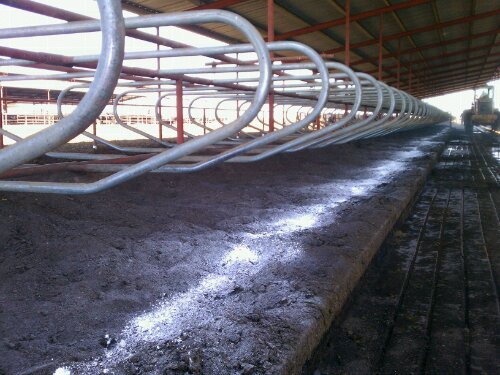
The first thing we do is put down Hydrated Lime to dry out any wet spots, yes cows do occasionally wet the bed.

Next we mix the Lime in with what we call the Freestall Groomer, we use this piece of equipment 3 times a week to re groom the beds.
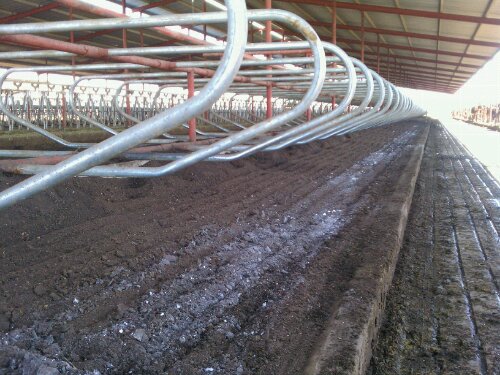
Here is what the beds look like after being groomed.

The next piece of equipment adds more bedding to the stalls.

This is the finished product a clean soft bed for the cows to lie in.

We use a process similar to composting to dry and sterilize the bedding prior to it's use.
Related articles
- Composted manure is the gardener’s best friend (sfgate.com)
- Hints, Tips and Advice on Using Manure in Your Garden (brighthub.com)
Dairy farm with a view? – Wordless Wednesday
Our dairy is located to the west of Yosemite National Park in California’s Central Valley and on extremely clear days we get a great view of Half Dome that you can see in this picture.
For a few more pictures of our family farm visit Pinke Post and why she would rather visit our farm than watch Oprah go Vegan for a Week.
What do cows eat?
The cattle on our dairy farm eat diets that are made specifically for them by a ruminant nutritionist. Here on the dairy we mix together individual ingredients to make a ration that is then fed to the cattle. In addition we do have some pasture to supplement the rations.
The ingredients are:
Dried Distillers Grain – this is the grain left from brewing and distilling spirits and is a good source of fat and protein.
Almond Hulls – Outer protective skin when the Almond grows on the tree
Cotton Seed – the inner part of the cotton boll that is left after the cotton fiber is removed
Various silages – made from Corn Plants, and various small grain plants
Alfalfa Hay
Various minerals and vitamins
We also include steamed flaked corn, water and some concentrated energy additives to make the ration.
To learn more about technical information on cattle rations please visit the blog of my great friend Jeff Fowle he is currently doing a series of posts on cattle nutrition.
Related articles
- How does hay help cows digestive system (wiki.answers.com)
- Cows play in sprinklers? Wordless Wednesday (raylindairy.wordpress.com)
Can I get a hand for an itch?
Here is a post perfect for Wordless Wednesday because no words were used to get a helping hand.

